Studio Morison designs Escape Vehicle #9 for when nature reclaims the planet
July 30, 2018Studio Morison's yellow PVC pavilion provides visitors to a Dutch art festival with the chance to sleep in one of the darkest places in the Netherlands.
Called Escape Vehicle #9, the lightweight demountable shelter is designed for an imagined future where nature has reclaimed the planet leaving humans to "tread quickly and lightly on the land they occupy".
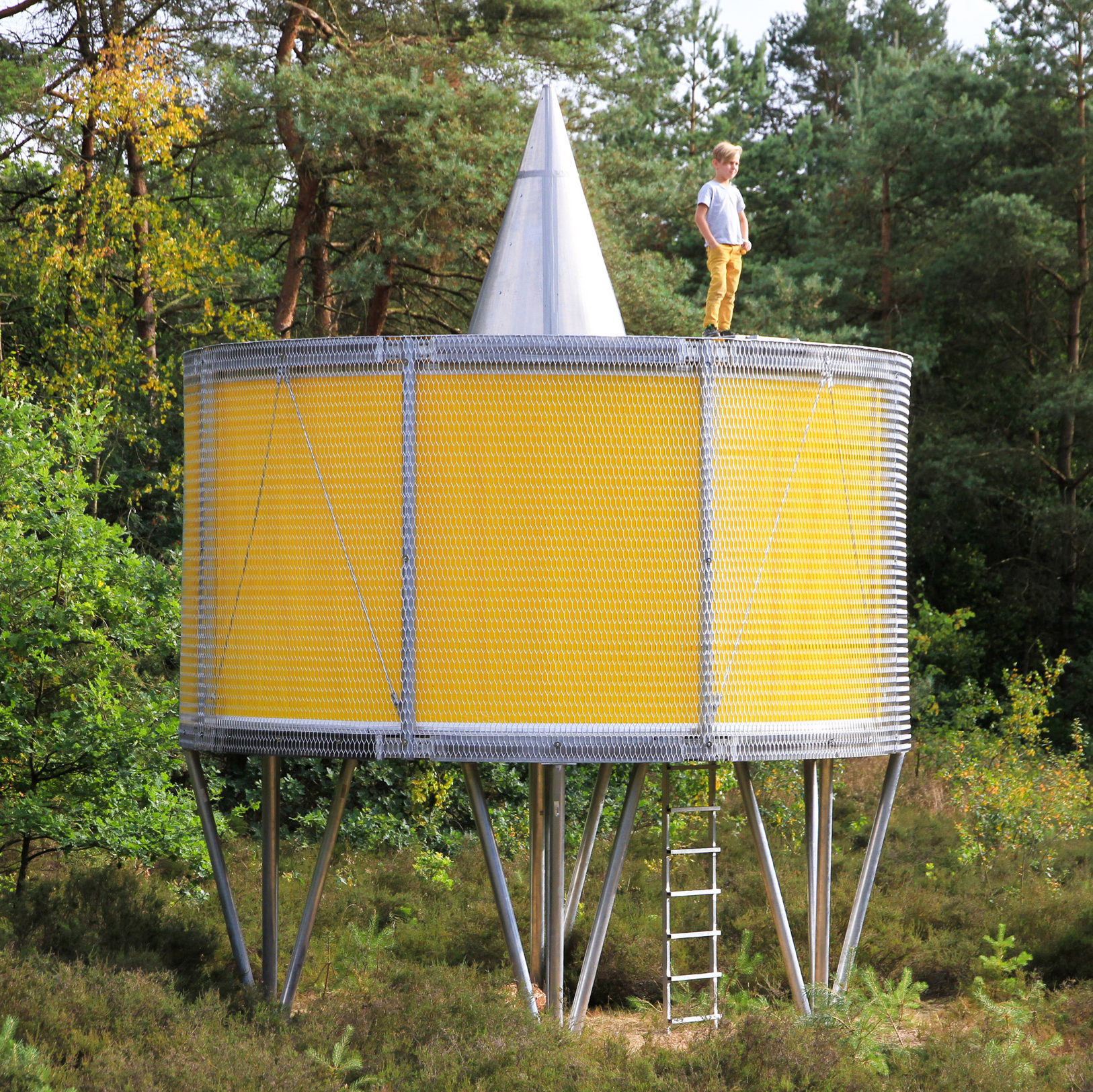
"When first imagining Escape Vehicle #9 I had a vision of a flight into the future," explained British artist Ivan Morison, who founded Studio Morison alongside his wife Heather.
"I saw a lightness from that future within the darkness of the present, and this is where the Escape Vehicle can take us towards," he continued.
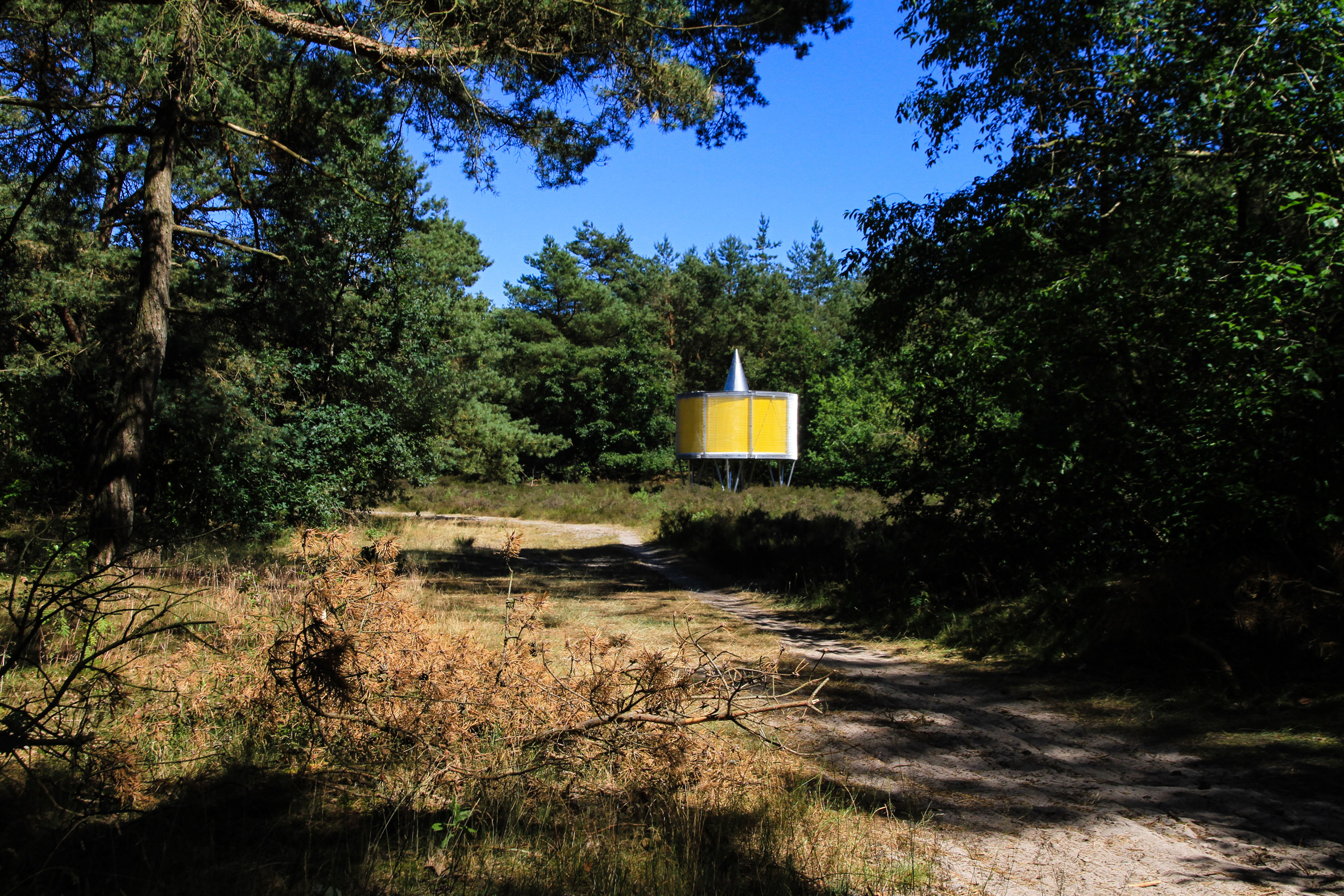
The design comprises a circular chamber for living and sleeping that is elevated above the ground on four pyramidal aluminium legs.
The chamber, which sleeps two people, is built from a protective outer layer of specially commissioned aluminium expanded mesh, and a taut inner curving membranous weather layer of yellow PVC.
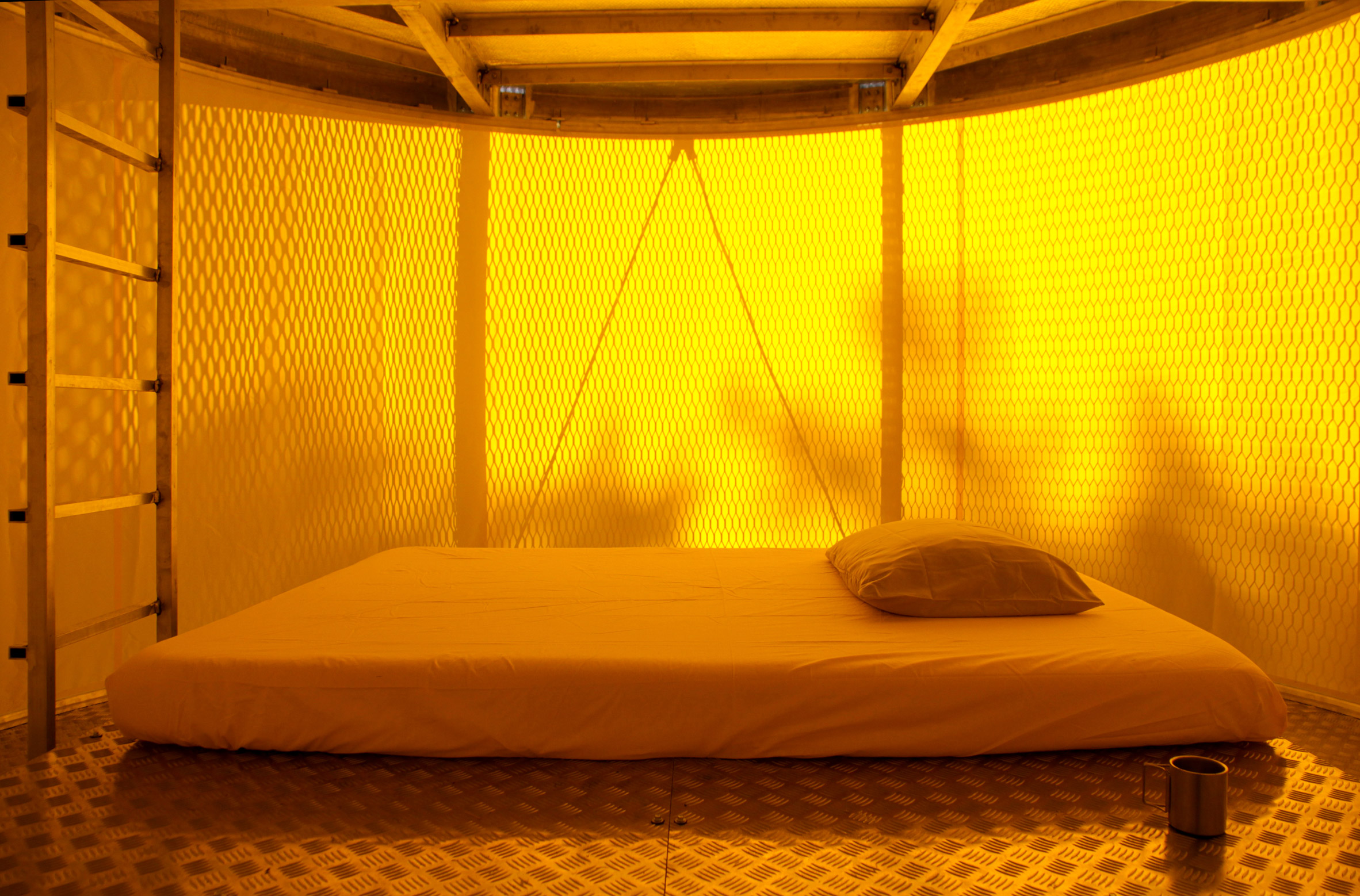
The chamber is accessed via a ladder and trap door in its underside while a conical "navigational buoy" made from bent sheet aluminium sits on its roof.
The interior is a minimal space with a metallic floor and a double bed at its centre that sits directly under the the concical navigation buoy.
The ceiling of the chamber is lined with a quilted foil insulation layer that helps maintain a habitable temperature day and night.
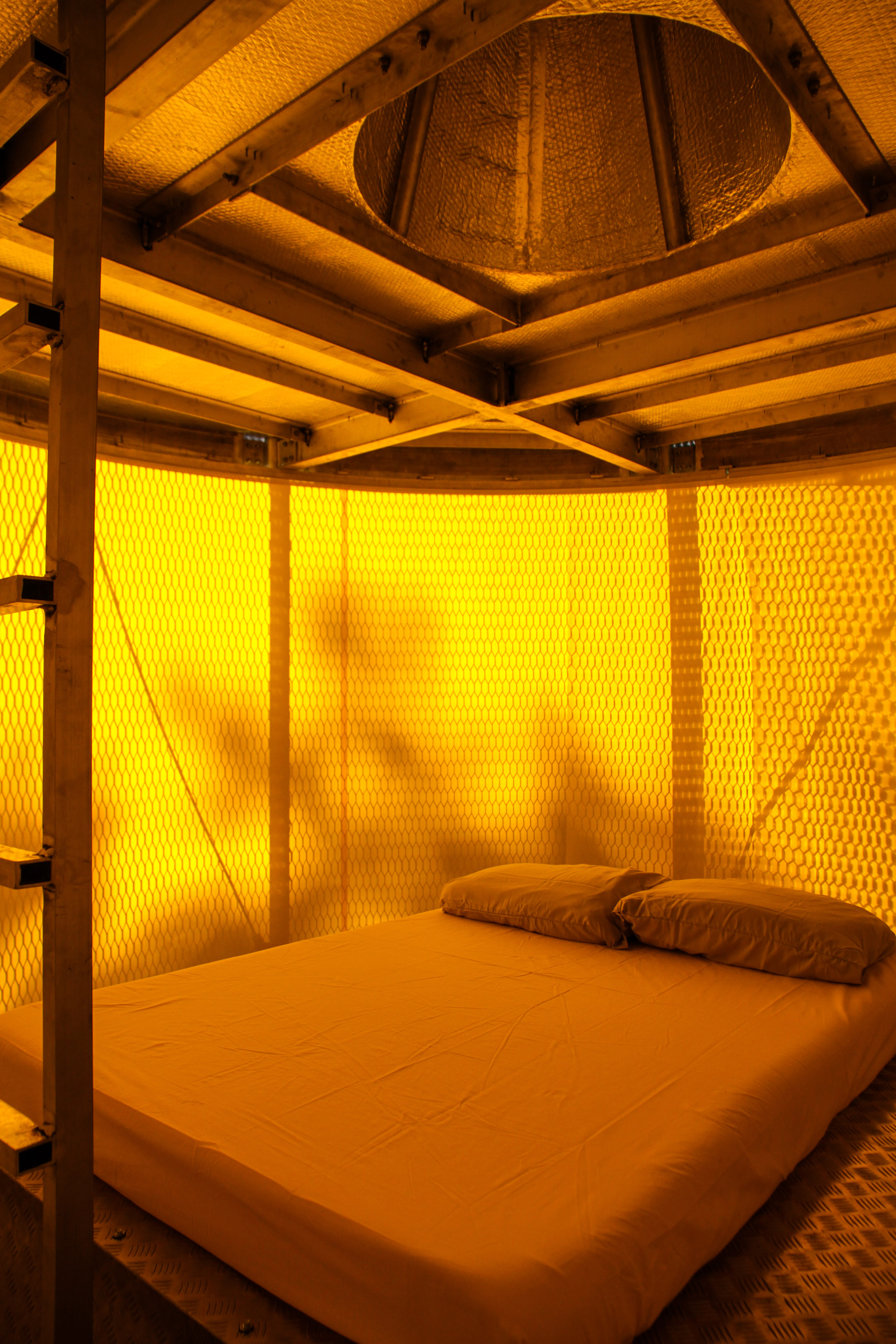
The pavilion has been installed at a site in Holtingerveld in the Netherlands, which was the site of the earliest settlers to the country 10,000 years ago. Described by the artists as a "primordial landscape", it is one of the darkest places in the Netherlands and at night you can see many stars and planets.
A hatch in the chamber's metallic ceiling, provides access to a deck, from which occupants can view these surrounding nightscapes.
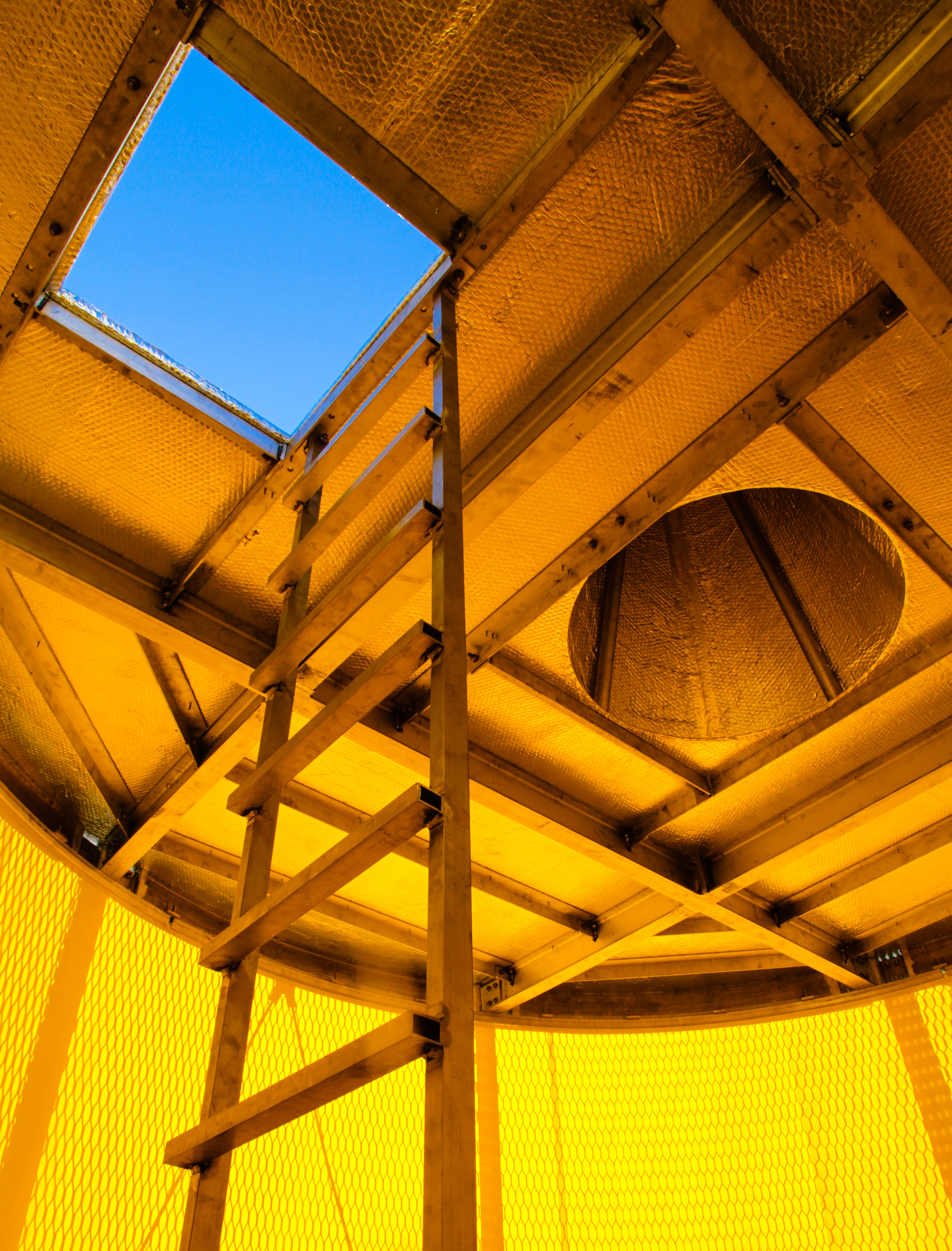
The pavilion is designed to be slept in overnight by visitors attending Into Nature – a biennial art route that is laid out in the ancient landscape of Drenthe. Running until 16 September 2018, the trail also includes works by Olafur Eliasson, Adrián Villar Rojas and Susan Philipsz among others.
The artists said that occupants of Escape Vehicle #9 will be able to experience first hand "the sense of darkness, of solitude, of instability and the possibilities of what is to come".
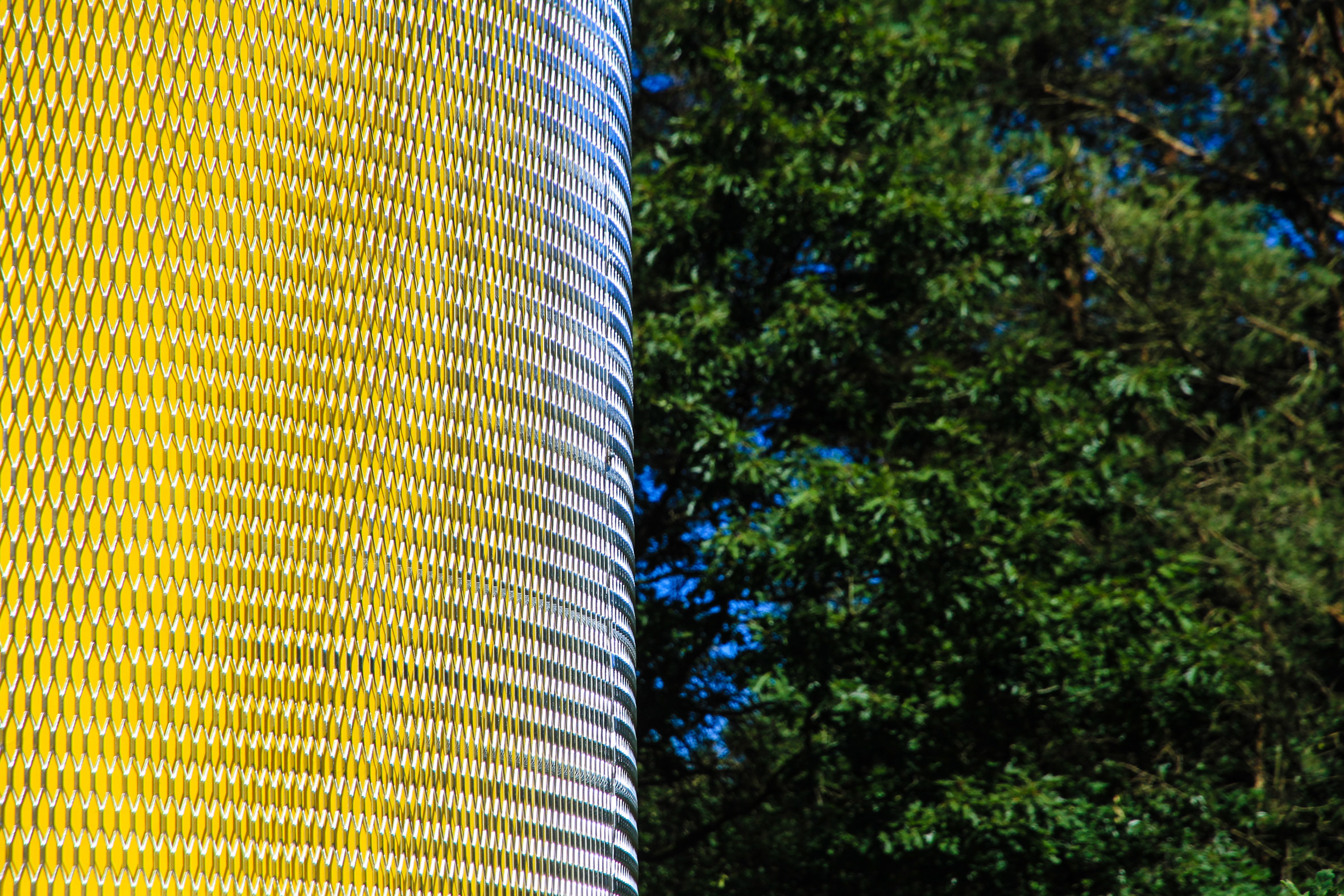
In the morning the shelter's interior has a slowly rising intensity of yellow as the sun rises, with rays of light creating ever-changing shadows across the shelter's inner membrane.
As the day progresses the yellow illumination becomes more intense rotating around the curved wall. The artists said that the strong yellow glow within the chamber has an enveloping and calming effect, which is emphasised when the occupant emerges into the stark white light of the outside world.
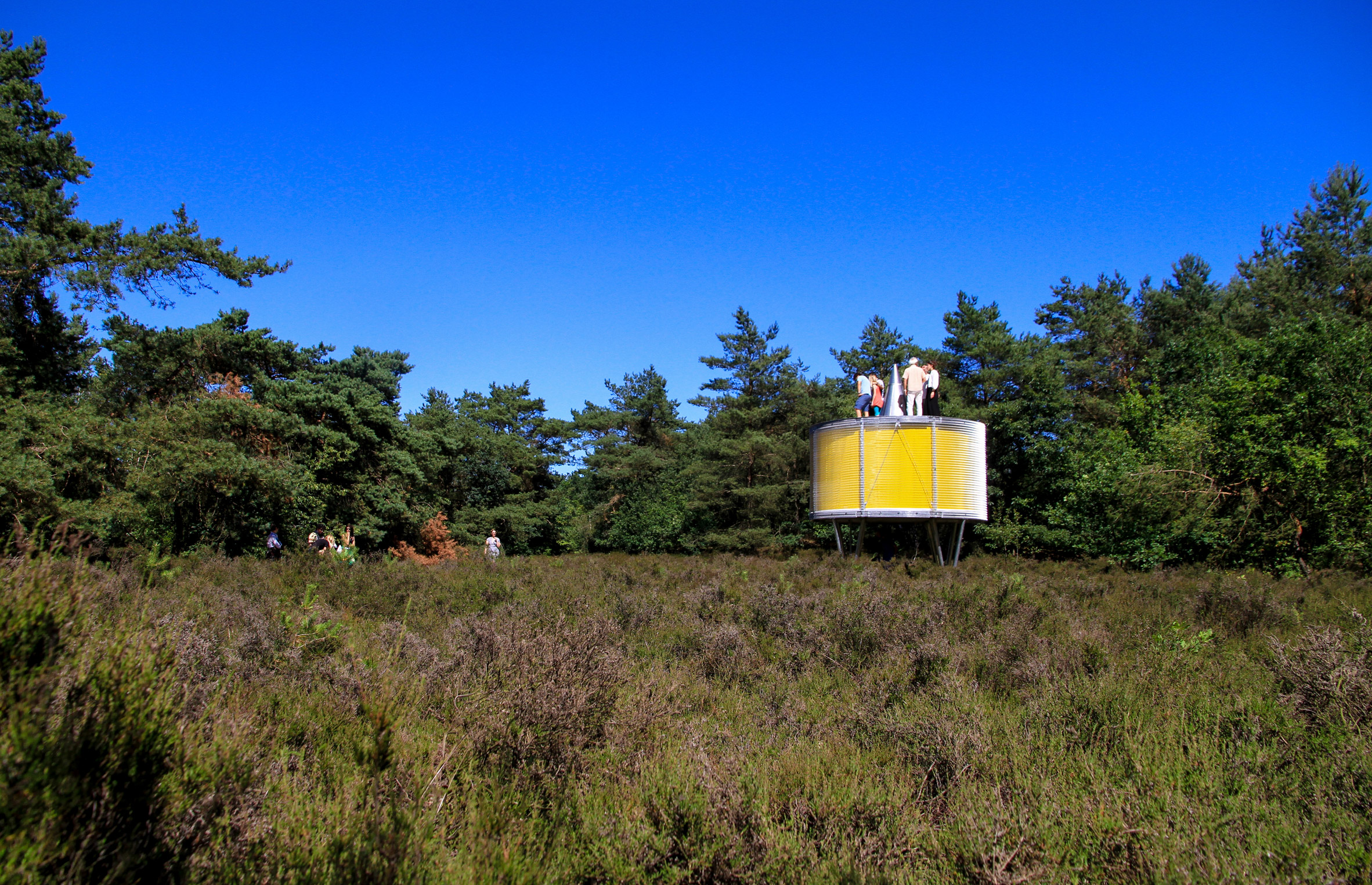
The pavilion is conceived as a set of connecting components and is fully demountable. The legs are supported and anchored by four Spirafix screw anchors, so that the shelter leaves as little impact as possible on the landscape.
Earlier this year, architects Dina Haddadin and Rasem Kamal unveiled a design for a hybrid shelter and water tower made from Corten steel pipes and woven goat hair that could provide oasis-like respite in the deserts of Jordan.
Photography is by Studio Morison.
Project Credits:
Concept: Heather and Ivan Morison
Commissioners: Into Nature
Design and installation: Studio Morison
Engineering: Artura
Metal fabrication: Leominster Engineering
Fabric patterning and fabrication: J & J Carter
The post Studio Morison designs Escape Vehicle #9 for when nature reclaims the planet appeared first on Dezeen.
from Dezeen https://ift.tt/2NVCtO9
via IFTTT
0 comments